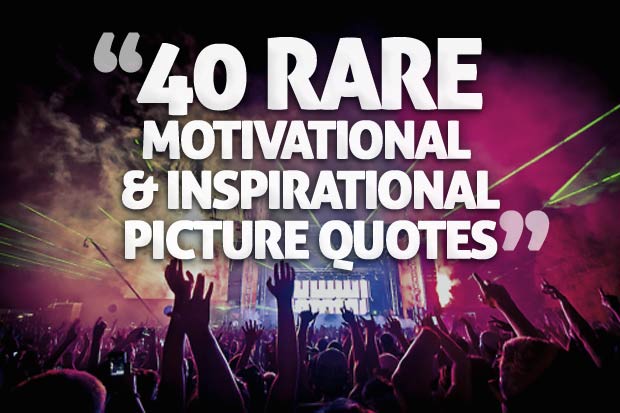Success Advice
How Your Beliefs Can Supercharge or Sabotage Your Success
Your life is dictated by beliefs and biases that drive your thinking, behaviors, and decisions

Pause for a moment and ponder two pandemic-era beliefs: First, closing schools will control the spread of a serious virus. Second, the consequences of such school closures—particularly social interruption and the prevention of immunity—are worse than becoming sick with the virus.
A common goal of controlling the virus could have created a new or modified version of school policies to accommodate both beliefs. But no common paths forward were researched or considered. Instead, adversaries chose to disagree and caused obstructions to collaborative governance.
Have you ever believed that you were the best person for a new job, only not to be selected? Was your self-opinion overconfident? And what did you assume about the other candidates? Your beliefs include your biases, which are made up of your opinions and assumptions. Your life, in turn, is dictated by beliefs and biases that drive your thinking, behaviors, and decisions.
Understanding your beliefs and biases
Beliefs translate your values into supporting behaviors and decisions. Biases are usually beliefs that come from a more personal perspective, such as your nature and nurture, your life experiences, your community influences, or the uncertainties in your world.
You might have a belief that vacations are good but a personal bias against beaches and relaxation. Beliefs and biases are not good or bad; they simply impact your decisions and outcomes. Understand them—and use them wisely.
Observing others can help you to see your own beliefs and biases. So whenever you find yourself cringing at other people’s behaviors or decisions, consider what might be prompting you to feel that way. Then ask yourself what their beliefs or biases might be to have prompted such behaviors or decisions. And think, too, about why you find those things to be offensive.
Now check in on one of your recent behaviors or decisions and consider the beliefs or biases that may have sparked it. Odds are you’ll find a belief or a bias buried in your unconscious mind. Or, conversely, it could be, quite obviously, in your conscious mind.
Using the “Five Whys” approach—a method of inquiry in which you ask yourself “why” sequentially five times—can help you identify your beliefs and biases and if you actually agree with them today.
Sometimes your behaviors and decisions are rooted in old beliefs that are no longer valid, such as a fear of losing when you have actually mastered an expertise that was once lacking.
Finally, ask yourself if your beliefs are aligned to your values. Beliefs add another layer of clarity to your values in the context of particular people or projects.
For example, if you value honesty, do your beliefs about a certain team member demonstrate that value? If you value learning, do you believe in others’ thinking in brainstorming or problem-solving sessions? Are your beliefs leading to good behaviors and decisions? Or are they causing obstacles to your work and decisions?
What might the school-closures folks have believed? And how did those beliefs serve their behaviors and decisions?
“Your chances of success in any undertaking can always be measured by your belief in yourself.” – Robert Collier
Using your beliefs and biases
It is not too strong of a statement to say that your beliefs and biases will likely impact your work and decisions. Areas of impacts can include:
- Research. Your beliefs can eliminate inquiry into areas that do not align to your beliefs. If you believe that socially oriented perspectives are useless in cost-benefit analyses, you might ignore the research of behavioral economists, which credits beliefs with driving decision-making in most scenarios.
- Behaviors and decisions. When everyone on a team believes together, that creates a belief that binds (Dr. Jon Shane, professor, John Jay College of Criminal Justice, CUNY). That can be positive in propelling a project to success, as there will be no divergent behaviors or decisions. But an in-group and an out-group can emerge, creating intolerance for the out-group’s beliefs. As a result, no consideration is given to the out-group’s work or decisions, even though they have an impact on behaviors and decision-making.
- Options. Your beliefs can overlook options that come from another perspective. If you believe a leader is incompetent, you likely won’t consider a suggestion from that leader that may very well be a valid solution to a problem.
- Outside-the-box thinking. Your beliefs can create strong and secure boundaries that restrict your thinking. If you believe that something is off limits, such as a niche market for a new product, you probably won’t consider its possible value.
Here are some proven ways to use your beliefs and biases to supercharge your success.
- Clarify your goals and values that can propel you toward success.
- Identify beliefs and subsequent behaviors and decisions to support that success.
- Confer with your team to adjust and confirm your goals, values, and beliefs in order to create positive bonds.
- Articulate your beliefs regularly to ensure positivity toward your goals.
- Continue to test for alignment within your team.
In closing, checking your goals, values, and beliefs with those of your collaborators will not only give you insights into your own thinking, but give you food for thought on how to manage your beliefs toward your success.
Success Advice
7 Simple Acts of Kindness That’ll Make You Everyone’s Favorite Colleague
When you put kindness at the forefront of all your workplace interactions, you neutralize the viciousness and become someone that other people prefer to work with.

A lot of bruised feelings remain after last year’s election season. But instead of perpetuating the rancor, the world is ready for more kindness in the coming year. It’s time to rekindle your dormant kernel of kindness and vow to bring it with you each day when you enter your workplace. (more…)
Startups
The Secret to Using Video for Maximum Impact and Brand Growth
Master video storytelling to captivate, engage, and grow your brand

The Power of Video in Engagement and Personal Branding
How does one master the ability to captivate an audience? This capability can mean the difference between success and obscurity, but knowing how to achieve it is the biggest challenge. (more…)
Startups
6 Misconceptions About Digital Products That Are Costing You Time and Money
Avoid these 6 digital product myths and build a real business

You’ve probably seen or heard someone talking about how selling online products and digital courses is as easy as 1, 2, 3 and you’re making $10,000 in your sleep overnight. (more…)
Success Advice
The Young Man’s Guide to Leadership: 10 Essential Skills for Success
Nobody wants to follow a leader who lacks self-confidence. Followers want leaders who are competent.
-

 Life3 weeks ago
Life3 weeks agoHarness the ‘Battery Effect’ to Transform Life’s Tensions into Your Greatest Strength
-

 Life4 weeks ago
Life4 weeks agoDoing This for 30 Minutes a Day Can Unlock Your Full Potential
-

 Startups4 weeks ago
Startups4 weeks ago7 Strategic Shifts to Help You Scale Your Business Smarter, Not Harder
-

 Entrepreneurs2 weeks ago
Entrepreneurs2 weeks ago10 Powerful Steps to Define and Solve Any Hard Problem Effectively
-

 Entrepreneurs2 weeks ago
Entrepreneurs2 weeks agoHow Smart Entrepreneurs Leverage User Feedback for Market Success
-

 Entrepreneurs4 weeks ago
Entrepreneurs4 weeks agoHolistic Entrepreneurship: The Overlooked Formula for Long-Term Growth
-

 Startups3 weeks ago
Startups3 weeks ago6 Misconceptions About Digital Products That Are Costing You Time and Money
-

 Entrepreneurs3 weeks ago
Entrepreneurs3 weeks agoThe Secret to Resolving Employee Disputes Without Losing Productivity






























